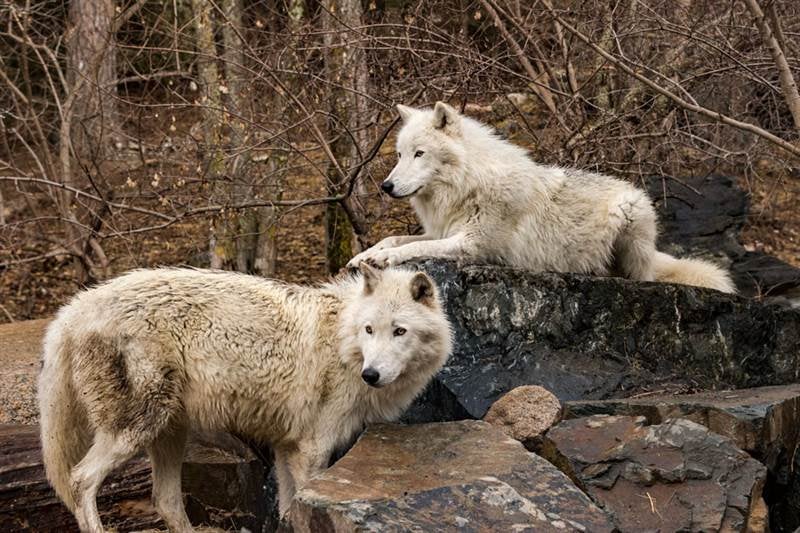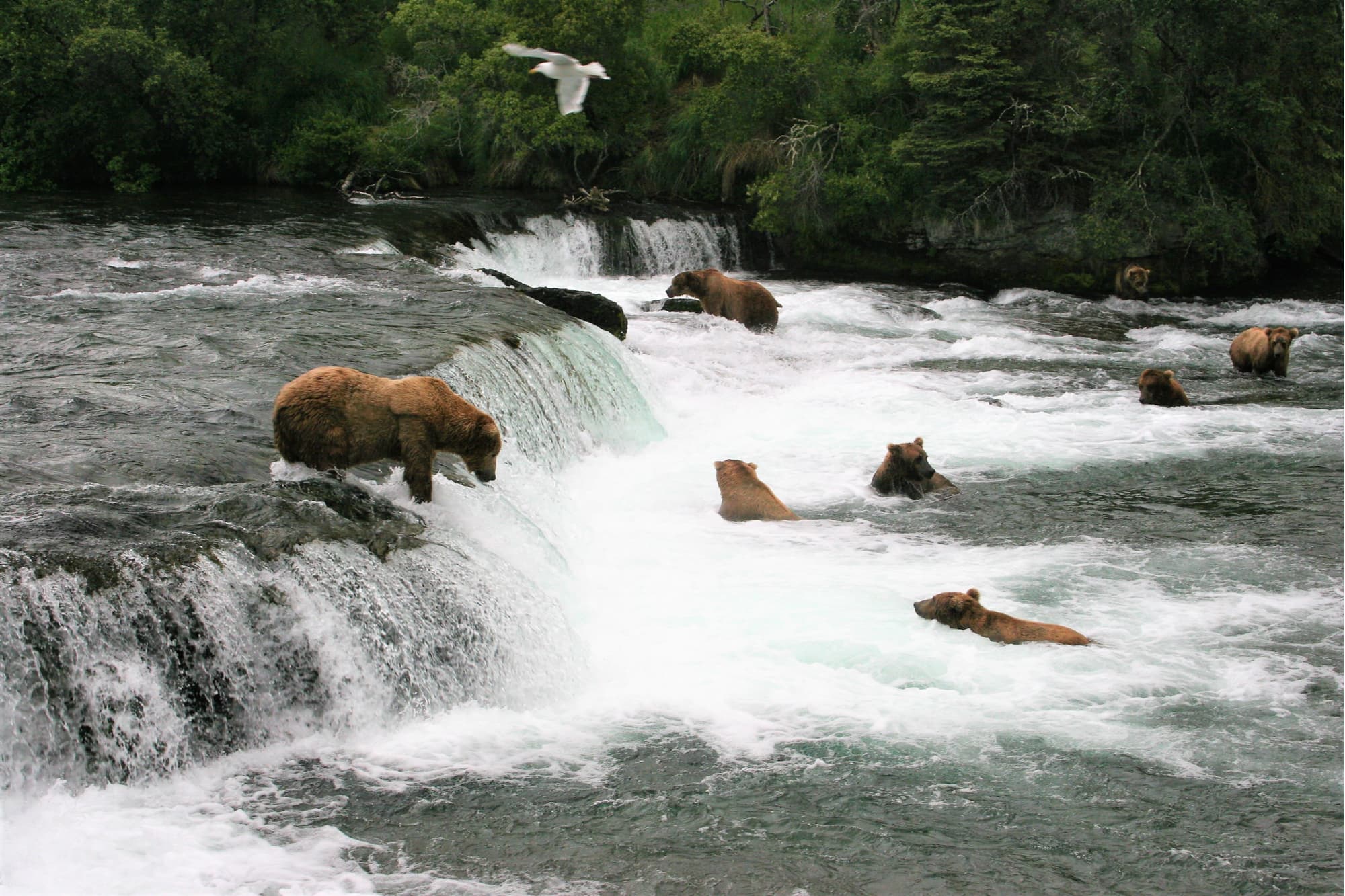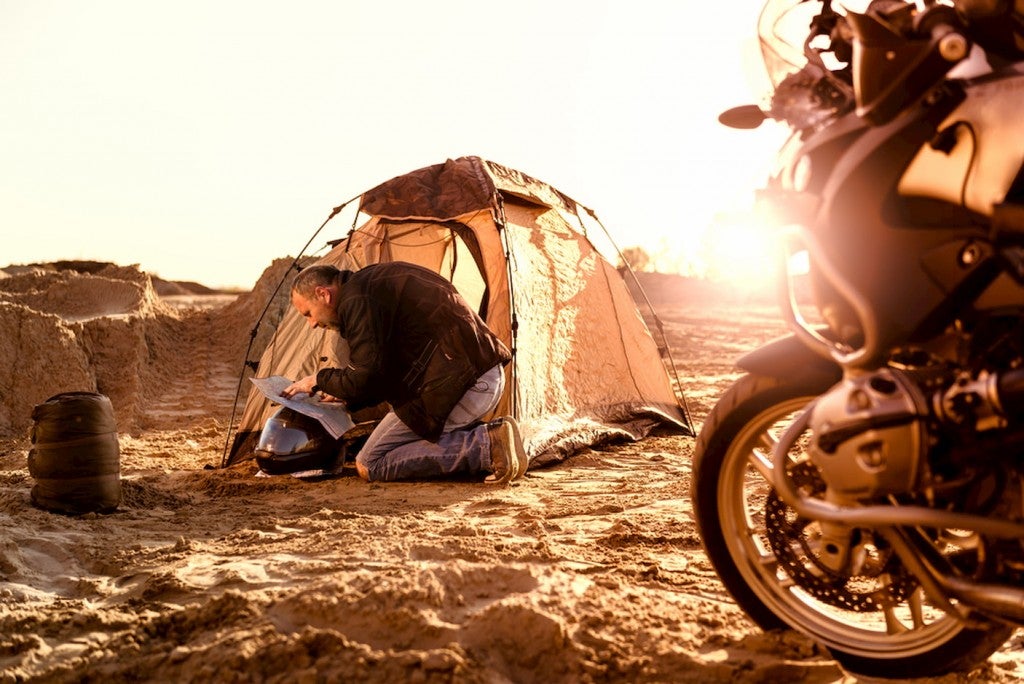While it’s hard to match the experience of spotting a bald eagle soaring above the trees or watching a brown bear hunting salmon in a river from a few hundred feet away, these wild encounters are more accessible than you might think. During the days when you’re stuck inside (desk job, anyone?) it’s still possible to lose yourself in the thrill of witnessing animals in their natural habitat through wildlife cam feeds. These live feeds can get much closer than you would want to be in real life, where up-close encounters could be dangerous for both you and the animals.
Wildlife cams are set up around the country and provide fascinating glimpses into the not-often-seen lives of the animals that occupy the same wild spaces we know and love.
These Live Wildlife Cam Feeds Offer Animal Access from your Computer

Image from the International Wolf Center
Why Use Live Wildlife Cameras in Parks?
Advancements in technology have changed the way we experience the outdoors (trail apps, GPS, etc.) and the way we study wildlife, too.
At the International Wolf Center in Ely, Minnesota, the development of high definition security cameras, which are used as wildlife webcams, have allowed the center to “continuously assess the pack’s behavior, environmental influences that may impact the wolves, and physical declines that may be inherent with aging pack members.”
Zoos, national and state parks, and even private citizens use webcams to showcase popular exhibits and wildlife. Researchers use webcams for scientific study and to monitor the health and wellbeing of wild animals and animals in captivity. By grabbing a sneak peek into the day-to-day habits of wildlife, scientists and researchers are able to advance their knowledge and implement conservation programs, protect habitat and improve outcomes for wild animals.
7 Great Wildlife Camera Feeds You Can Watch Now
1. National Arboretum Eagle Cam – Washington, D.C.
Formerly known as the D.C. Eagle Cam, the National Arboretum Eagle Cam live streams the nest of a mated pair of bald eagles known as Mr. President and The First Lady. The eagles live in a Tulip Poplar Tree in the National Arboretum. The symbolic birds have returned to their nest each year since 2016 to raise their young, historically laying two eggs each nesting season. In addition to the webcam, moderators also guide a live chat and answer questions from the public, providing a wonderful educational experience for those that tune in.
2. Channel Islands Live Ocean Webcam — Channel Islands National Park, California
Home to one of the richest marine environments in the world, Channel Islands National Park offers an underwater glimpse of marine life as it is rarely seen. The cam records life in a “majestic, amber-colored kelp forest” where nearly 1,000 marine species live or regularly pass through. The park’s live wildlife cam is located in the ocean landing cove on Anacapa Island, off the coast of California between Ventura and Los Angeles. When tuning in, prepare to be mesmerized as colorful fish dart back and forth across the camera lens as the kelp sways peacefully with the push and pull of the ocean currents.
3. Katmai Bear Cams — Katmai National Park & Preserve, Alaska
The brown bears of the Brooks River have their own fascinating and often funny lives, and the Katmai Bear Cam allows you to view their daily routines in the comfort of your own home. The cameras run live from the summer until early fall, when the bears are hunting and raising their young. The Brooks Falls cam allows viewers to watch the bears hunt for salmon. During peak hunting time in July, as many as 25 bears have been seen fishing near the falls at one time. The Lower River cam captures mothers with their young during the height of summer as well as all bears in September and October, when they fish for salmon at the mouth of the river.
4. Farallon Islands Live Webcam – Farallon Islands National Wildlife Refuge, California
Thirty miles off the coast of San Francisco, Farallon Islands National Wildlife Refuge is the remote home of a “globally significant” population of wildlife, including seals, sea lions and hundreds of thousands of seabirds. The refuge’s webcast is mounted to the top of a lighthouse in southeast Farallon Island and frequently captures the movements of the marine mammals and birds that call the island home. Because of the sensitive habitat and complex ecosystem on the Farallon Islands they are not open to the public, so these wildlife webcams are the only opportunity to see what life is like in this beautiful and isolated location.
5. International Wolf Center Wolf Cams — Ely, Minnesota
The International Wolf Center in northern Minnesota has been managing captive wolf populations since 1989. The center’s mission is to teach the public about wolves, their relationship to wild lands and the human role in their future. To that end, the center’s Wolf Cams live-broadcast the daily life of their “ambassador wolves,” an exhibit pack of four wolves that live on 1.25-acres at the center. While the wolf cams capture the live movements of the wolves, the center also releases weekly wolf videos that are narrated by the Wolf Center staff.
6. Manatee Webcams — Blue Spring State Park, Florida
Florida manatees live in slow moving, shallow water such as bays and rivers. These large marine mammals are a treat to spot in their natural environment, but they can be elusive. If you don’t have the opportunity to search for the creatures in the wild, try the manatee webcams at Blue Spring State Park instead. While the underwater and above-water webcams are no longer live, tune in to see highlights from the most current manatee season, including special shots of a manatee with her calf and one of an adorable manatee named Alice inspecting the camera.
7. Audubon Osprey Nest Cam — Hog Island, Maine
Getting up close and personal with a bird of prey’s nest has never been easier. This live wildlife cam captures the nest area of two western ospreys—Rachel and Steve—perched 30 feet above the Audubon Society’s Hog Island sanctuary off the coast of Maine. While the couple separates for the winter, thousands tune in for their reunification every spring. This live wildlife cam shows an intimate look at these raptor-like birds as they fish, soar, and hatch eggs annually.
Related Campgrounds:
- El Capitan Beach Camping, Capitan, CA



